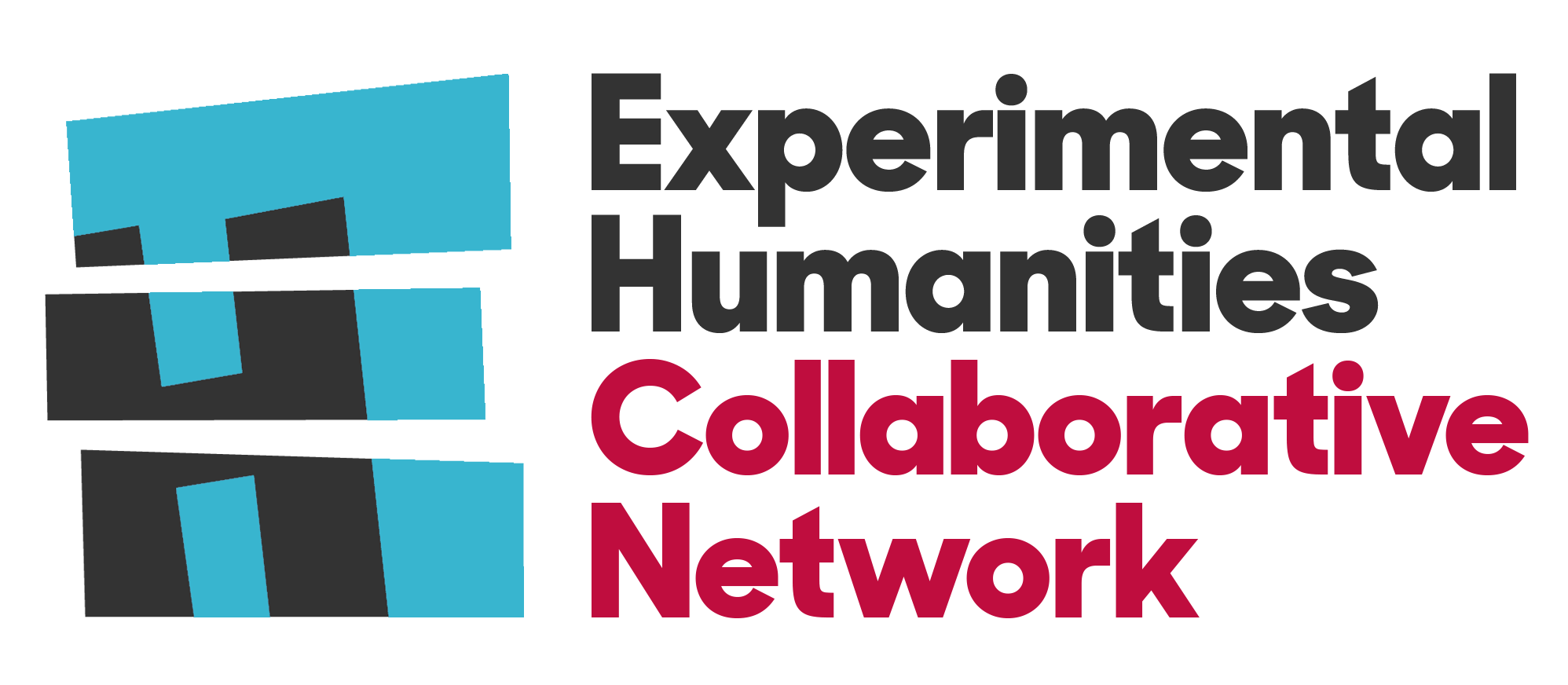Welcome to The Experimental Humanities Collaborative Network
To Be—Named Bishkek Exhibition
Bishkek, Kyrgyzstan
Curated by Sasha Filatova
Our personal names are gifted to us at birth as we emerge into already existing families, communities, and countries. They can be a blessing for us and for our families. Throughout our lives, however, we might receive or create our own names or nicknames as we come to belong to new and different communities. We also develop narratives about who we are through these given and chosen names. As a result, we navigate society through our interpretations of our names, and in this act, there is a recognition of agency and of assigning oneself the right to tell one’s own story.
***
As a multi-site international exhibition, To Be—Named reflects upon how names are created and used to shape, reshape, and sometimes mis-shape our worlds and identities. Each iteration of the exhibition (Germany, United States, Greece, Kyrgyzstan, Mexico, Palestine, Republic of Sakha) is designed around a core series of digitally based artworks* that are positioned in conversation with regional artists and artworks.
The To Be—Named exhibition in Kyrgyzstan addresses the issue of agency within personal names. What is our role in appropriating, reappropriating and reinterpreting the names that have been given to us? Acts of naming are not merely descriptive or representative—they have creative capacity and actively take part in shaping our interactions with the worlds in which they are embedded. Our aim is to help shape in a timely and constructive way discussions about the power dynamics involved in and consequences of who defines whom through naming. Our specific focus explores these issues within the cultural context of Kyrgyz society. We provide local perspectives on the politics of naming—not just as a theoretical concept—but as a lived experience in Kyrgyzstan.
*Core traveling artworks curated by
Krista Caballero
Krista Caballero
Krista Caballero is an interdisciplinary artist exploring issues of agency, survival, and environmental change. Moving freely between traditional and emerging media, her work explores the messy and often surprising encounters between human, ecological, and technological landscapes. In 2010 she created Mapping Meaning, an ongoing project that brings together artists, scientists and scholars through experimental workshops, exhibitions, and transdisciplinary research.
Caballero was selected as a 2017 Smithsonian Artist Research Fellow and is now a Smithsonian Research Associate working with the National Museum of Natural History researching the cultural implications of bird species decline. She has also been awarded residencies at the Skowhegan School of Painting and Sculpture, ME; Pyramid Atlantic Art Center, MD; and Caldera Arts, OR. Her artwork has been presented nationally and internationally in exhibitions and festivals such as the International Symposium on Electronic Art (ISEA); the North American Ornithological Conference; “Paradoxes in Video” at Mohsen Gallery in Tehran; EXTREME. ENVIRONMENTS / RAY2018 Photo Triennale in Germany; Balance-Unbalance International Festival in Queensland, Australia; “A New We” at Kunsthall Trondheim in Norway; Foggy Bottom Outdoor Sculpture Biennial, Washington D.C.; and the Association for Computers and the Humanities. Caballero received her MFA from the School of the Museum of Fine Arts/Tufts University and is currently the Co-Director of the Center for Experimental Humanities (EH) and Artist in Residence at Bard College in New York.
, Christian Ayne Crouch
Christian Ayne Crouch
Dr. Christian Ayne Crouch is associate professor of historical studies and director of American studies at Bard College and currently serves on the council of the Omohundro Institute. She is the author of the award-winning Nobility Lost: French and Canadian Martial Cultures, Indians, and the End of New France (Cornell 2014). Her scholarship has considered topics in Atlantic military culture, French imperial legacies, intersections in Native and African-American history. Her current book project, Queen Victoria’s Captive: A Story of Ambition, Empire, and a Stolen Ethiopian Prince explores the human and material consequences of the 1868 Maqdala Campaign in Ethiopia in Atlantic context. This past year she also worked as the curatorial advisor for the Brooklyn Museum’s exhibit <em>Jeffrey Gibson: When Fire Is Applied to a Stone it Cracks.
https://ccs.bard.edu/people/2610-christian-ayne-crouch
, Gwyneira Isaac
Gwyneira Isaac
Dr. Gwyneira Isaac is a research anthropologist and curator of North American Ethnology in the Department of Anthropology at the Smithsonian’s National Museum of Natural History. Her passion for museums and working with Native American communities began when training as a museum photographer, and she encountered a vast array of glass plate negatives, photographs and archives that documented the lives of Native Americans from the 19th century onwards. She realized that, up until that point, she had been deprived of access to this history as it had been largely absent from her text books. Since then, she has devoted herself to finding out anything she could about Native American culture—a journey that took her to graduate school at Oxford University, the Southwest region of the US to conduct fieldwork and, ultimately, to the National Museum of Natural History
Her main research focus is on how Native American communities tell their own histories, as described in her book Mediating Knowledges (2007), which tells the origin story of a tribal museum in Zuni, New Mexico. She is also interested in how different media, such as photography, exhibit models and now 3D printing, help us to understand how technology has shaped the depiction of humans and humanity over time. At the Smithsonian, she directs the Recovering Voices program that supports communities in accessing collections as part of their efforts to revitalize endangered languages and knowledge. Her current research projects include understanding Native American concepts of health and wellbeing, especially through cultural revitalization practices.
https://naturalhistory.si.edu/staff/gwyneira-isaac
, Marta Ostajewska
Marta Ostajewska
Marta Ostajewska (º1980, Poland) performer and visual artist, PhD researcher at the Academy of Fine Arts in Krakow and at the University of Warsaw (Artes Liberales). Her M.A. in Multimedia Design was received from School of Arts in Ghent. She graduated also at the University of Lodz (Theory of literature). Her artistic activities were presented in several galleries and at the international theater’s stages: Croxhapox Gallery, Campo Victoria, Nieuwpoorttheater, NTGENT in Ghent, Rozentheater in Amsterdam, The Manhattan Gallery, Prexer, Factory of Art, Gallery Kobro, Posiadło Ksiezy Mlyn, Free Space Gallery in Lodz, Articule Gallery in Montreal, Industra Gallery in Brno. She has participated in many international projects, among others, in the artistic residency Human Hotel: Copenhagen in Denmark and in the international festivals (BIO50 in Ljubljana, RIAP2014 in Quebec City, Canada, PAB2015 in Bergen, Norway). She is co-chief editor of the artistic magazine Woof Woof Arf Arf. She publishes her artistic works and theoretical texts related to the modern art scene, site-specific art and performance art on the international stage.
http://www.martaostajewska.com/
, and Bently Spang
Bently Spang
Tsitsistas/Suhtai Nation, Montana, United States
BENTLY SPANG is an independent multidisciplinary artist, educator, writer, curator and an enrolled member of the Tsitsistas/Suhtai Nation (a.k.a. Northern Cheyenne) in Montana, who works in mixed media sculpture, video, performance, photography and installation. His work confronts and confounds the persistent, romantic and inaccurate role crafted for Native people in the false narrative of ‘The West.’ He is in museum collections in the US and Europe and has exhibited at such venues as the Metropolitan Museum of Art, the Brooklyn Museum, the National Museum of the American Indian and the Nelson-Atkins Museum. He has an MFA in Sculpture from the University of Wisconsin-Madison and a BS in Art and Business from Eastern Montana College (a.k.a. MSU-Billings). He is a 2018 recipient of the Native Arts and Culture Foundation National Artist Fellowship.
The To Be—Named project is a partnership between the OSUN funded Experimental Humanities Collaborative Network, the Recovering Voices program at the Smithsonian Institution and the European Union funded CoLing project.









